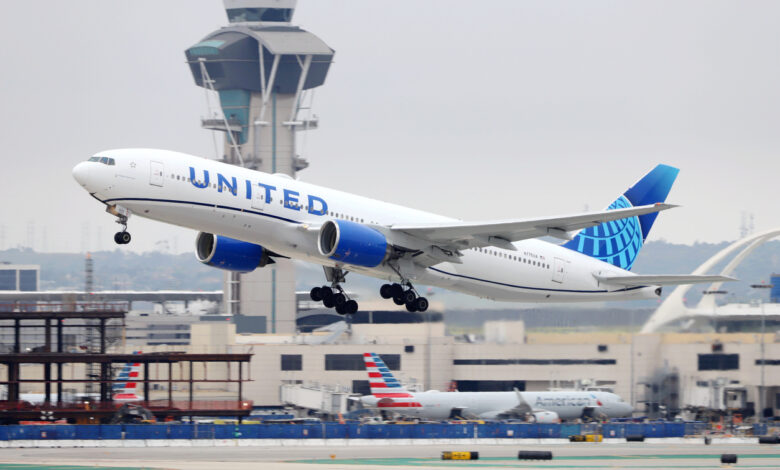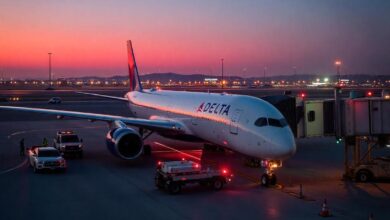United airlines flight UA770 Emergency Diversion Really Happened

Commercial air travel has always been where human proficiency, technology and unpredictable events come together. Flights in the news are now a customary occurrence which is not based on where the flight was scheduled to fly to, but what has happened during the trip that has intruded on the progress of the flight. An example of an incident that attracted the attention of people was the emergency diversion of the united airlines flight ua770 emergency diversion.
Most passengers board with guesses of a smooth journey, but one that is marked with diversions brings to life the intricate nature of aviation safety. The case study of united airlines flight ua770 emergency diversion not only illustrates the difficulties in dealing with emergencies at high altitude but also depicts how airline companies and their pilots could be trained into carrying out perfectly safe flying.
Table of contents
The Route of united airlines flight ua770 emergency diversion
United Airlines flight ua770 emergency diversion was an ordinary flight that was planned to connect people over a significant domestic route. The day of the incident drew no issues and both the weather . and the traffic were favorable, the aircraft started off without any problems. Halfway through the flight, however, something happened and the story turned to an example of aviation safety.
It is reported that the flight had an (engineered) mechanical anomaly, which activated a series of in-flight tests prescribed to be done by the cockpit crew. Although the specifics of the fault have not yet been clarified, the diversion decision was made by the principle of aviation safety: when it comes to the permissibility of risk, then lives go ahead of logistics.
What marked the United Airlines flight ua770 emergency diversion?
Forces at high altitude may cause emergencies through many things- medical emergencies, machinery malfunctions or external adverse conditions like intense turbulence. In the example of United airlines flight ua770 emergency diversion incident, there was some technical issue to do with the system of operation of the aircraft that diverted the plane.
Decision-making in these situations is organized yet adaptable on the part of airline crews. Pilots go over rigorous checklists, assess the severity of the problem, communicate with ground personnel, and make the determination of whether it is safer to carry on or land.
The Way in which Diversions are Managed in Aviation
The expression might sound alarmist, which is an emergency diversification in aviation, it is, in most cases, a precaution and not a panic. The airline philosophy is within the spirit of redundancy and prevention.
- A diversion is based on co-ordination of various levels
- The cockpit reports to the Air Traffic Control to re-route the aircraft.
- Cabin crew are positioned to attend to the needs of the passengers.
- Ground personnel at the diversion airport must be informed to be ready to receive an unscheduled flight.
This three-fold design makes sure that the diversions albeit disruptive are as smooth as possible.
The Customer In-rail on united airlines flight ua770 emergency diversion
The experience was naturally disturbing to the passengers on board United airlines flight ua770 emergency diversion. Quite a few were part-way through their flight when the intercom announcement went out: they were diverting.
Initial fear gave way as the cabin crew remained composed, assured customers, and clarified to them that the diversion was part of the security precaution, and not necessarily a threat. Airlines know how to communicate at such times. A reassuring sounding and rational clarification can turn a fearful cabin into a compliant one.
Safety Decisions such as UA770 Why they Matter
Safety in aviation is reinforced on levels of precautionary measures and the diversion of United airlines flight ua770 emergency diversion is a pure example of using such measures. Instead of the risk of further flight in uncertain conditions, a controlled diversion was heard first.
This move is in line with zero-compromise safety of the aviation industry. These policies have led to the safest form of long-distance travel in the form of commercial flying, over decades.
Response of united airlines flight ua770 emergency diversion
After the redirect, United Airlines published an announcement that their Flight UA770 was landed successfully and they are focused on safety. Technical departments arrived to examine the aircraft when it landed to find out the cause of the problem.
In a company like United that has millions of clients per year, it is important to convey the message of transparency and reassurance to keep trust in it. The response complemented the message that there are no compromises made on safety on account of schedule or cost.
Lessons Of the UA770 Incident
The reasons to take a closer look at flight UA770 lie in the necessity to be reminded of the complex game of technology, training, and human judgment in aviation. The distractions are disruptive, also the sign of a working system as planned.
Rather than concentrating on inconvenience, as such incidents do, it brings out the following:
- Pilot training is intense and is oriented toward fast and high-stakes decision making.
- Aircraft systems are advanced and are backed up by foolproof backup procedures.
- Passengers may be inconvenienced but the value attached to lives culture overrides the value placed on timetables.
Conclusion
The story of the United Airlines Flight UA770 emergency diversion reflects both the challenges and the strengths of modern aviation. What could have been a major incident was effectively handled through quick decision-making, robust safety protocols, and seamless communication between the cockpit and air traffic control. By diverting to Denver International Airport, the flight crew demonstrated the importance of preparedness and training, ensuring that passengers reached the ground without harm.
This diversion serves as a strong reminder that while unexpected technical irregularities such as a mechanical issue or hydraulic fault can occur, the aviation industry is built on redundancy and precaution. Airlines like United maintain rigorous maintenance schedules, but when unforeseen circumstances arise, emergency procedures guarantee that passenger safety remains the priority.
FAQS
1. What caused the United Airlines Flight UA770 emergency diversion?
The diversion of United Airlines Flight UA770 was prompted by a suspected technical irregularity in the aircraft’s operating system. While the exact mechanical fault has not been fully disclosed, the crew acted on aviation safety principles, prioritizing lives over logistics by diverting the flight to the nearest suitable airport.
2. How are emergency diversions like UA770 managed in aviation?
Emergency diversions follow a structured yet adaptable system. Pilots communicate with air traffic control, cabin crew manage passenger safety and reassurance, and ground teams prepare for an unscheduled landing. This threefold coordination ensures that diversions are handled as precautionary measures rather than crises.
3. What lessons does the UA770 diversion highlight for aviation safety?
The United Airlines Flight UA770 emergency diversion underscores the value of pilot training, advanced aircraft systems, and a zero-compromise approach to passenger safety. While diversions may cause inconvenience, they reinforce trust in the industry’s commitment to precaution, redundancy, and continuous improvement.

